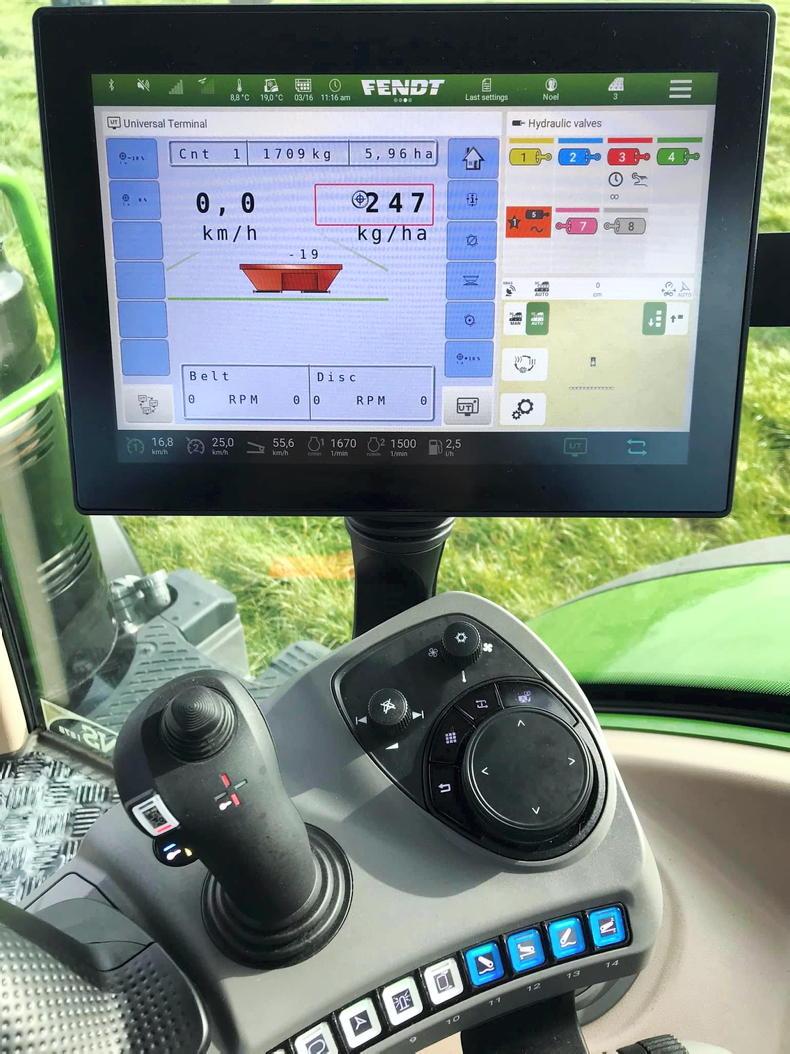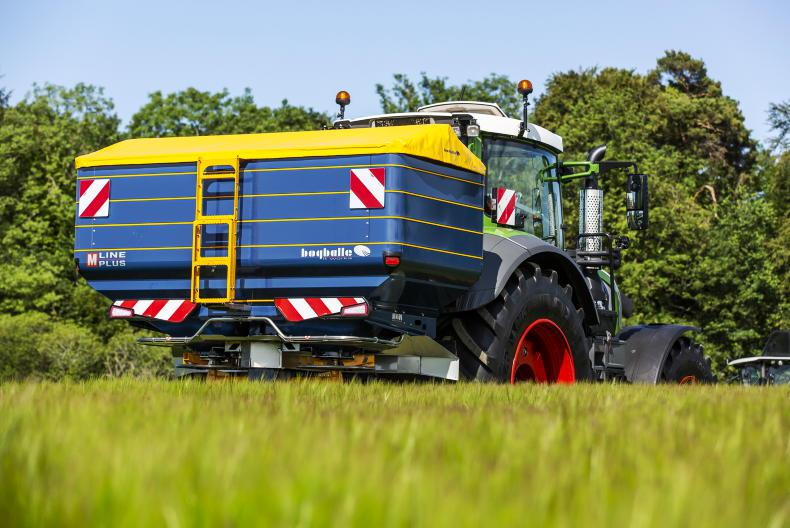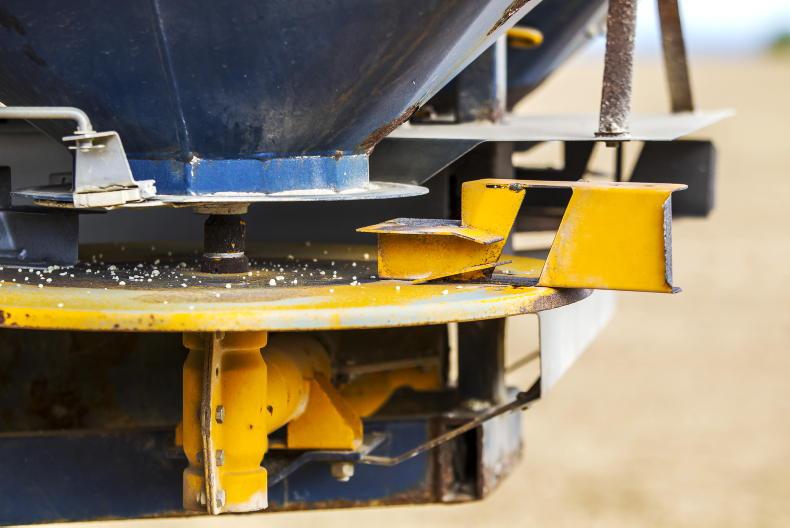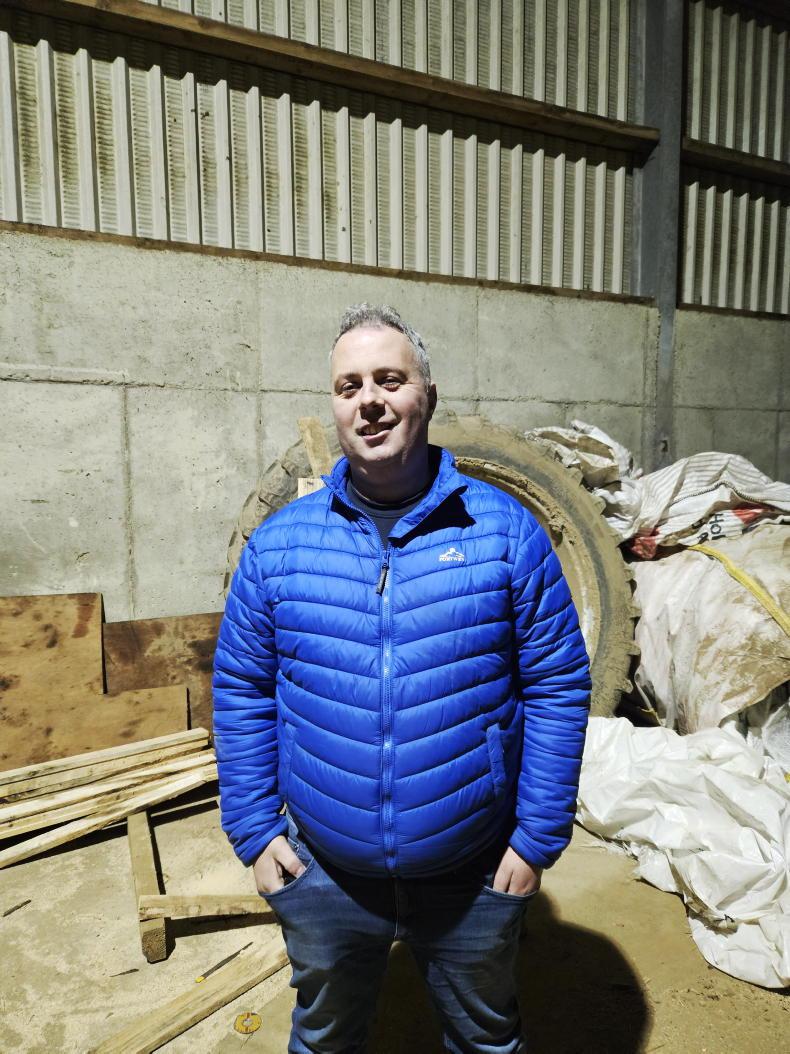Tillage farming just outside the village of Twomileborris in Co Tipperary, Michael Healy is a big believer in getting the most from his land and machinery, with technology playing a fundamental role. From running low ground pressure VF tyres to RTK auto steer with top-end accuracy, Michael feels that improving farm efficiencies is key to running a modern successful farming enterprise.
Tillage farming just outside the village of Twomileborris in Co Tipperary, Michael Healy is a big believer in getting the most from his land and machinery, with technology playing a fundamental role.
From running low ground pressure VF tyres to RTK auto steer with top-end accuracy, Michael feels that improving farm efficiencies is key to running a modern successful farming enterprise.
Based in Tipperary close to the Kilkenny border, the Healys are growing a mix of potatoes, beet and cereals within a 20-mile radius.
Up until 2018, Michael Jr and Michael Sr of Coolcroo Farm applied all beet and potato compound fertiliser at 15m bout widths and corn fertiliser at 24m bout widths using a 1997 Bredal K45.
Described as a bulletproof machine that never let the team down, Michael felt it was time to move with the times and change to a high-end machine.
Michael noted that upgrading to a GPS-controlled spreader was the natural progression for his farming business.
Based on the success of his previous machine, there was no doubt in the family’s mind that they would be sticking with Bredal.
New trailed machine
When looking at Bredal spreaders, the duo opted for a new F10 trailed spreader, taking delivery back in 2018.
At the time, this was a new machine to the market, which was positioned at the upper end of the Bredal offering and indeed the upper end of the market offering, coming fully loaded with all the bells and whistles.
The new spreader came with full GPS control, self-calibrating weigh cells, section control and the option of variable rate application.
Michael explained that moving to a new spreader allowed the family to move with the times.
The larger capacity machine saw the Healys move from a 5t spreader to a 10.5t spreader. Blanket bout widths on all crops on the farm were also increased, going from 15m up to 24m widths.
“We regular tray test, but throughout the machine’s time on the farm we have never needed to make any adjustments to the machine. This, coupled with the full auto steer has led to improved accuracy, and has also taken an element of stress away from the operator.”
Rate changing on the move
The F10 is fully controlled using a TeeJet rate control system. This allows the machine to alter its spread rate depending on forward speed.
Forward speed can be monitored in three different ways using either the wheel sensor on the spreader, GPS signal or from the tractor’s own transmission speed.

Spreading to 24m, the spread pattern can be split into 12 different sections.
The spread pattern and rate to each disc can be altered. This is done through the hydraulically controlled dual floor belt system in tandem with the automated electronic drop point control.
The dual belt system allows the fertiliser feed rate to be controlled to avoid a backlog of material when a lower rate is being spread on one side of the machine.
Section control on this spreader is controlled by the adjustment of the drop zone on to the disc, along with the individual feed to each disc.
One of the big differences between this machine and its competitors is the manner in which the fertiliser is delivered to the discs, and also the short distance to the drop point which gives a more precise spread pattern.
The spread can be split into 12 different sections.
This gives the machine excellent accuracy when spreading in a wedge shape and also the capability to spread precisely to yield maps and other data that can be used to alter spread rates. This capability is also used to achieve the most accurate headland spreading possible.
Bredal claims that the machine can produce coefficient of variation (CV) values of less than 8%, up to a spread width of 30m, which is very impressive.
The move to
IsoBus control
The Healys’ main workhorses on the farm are an even split between John Deere and Fendt tractors.
Instead of buying individual control boxes for sprayers, drills and spreaders, the Healys decided to venture down the route of IsoBus control in 2018. This is a move they took in their stride.

The F10 comes with IsoBus control as standard.
Any machine that can be used through IsoBus is now ordered this way. Michael noted that he prefers using the IsoBus system on the Fendts over the John Deeres.
The F10 comes with IsoBus control as standard, but an alternative Müller control unit is available if the tractor isn’t IsoBus-ready.
The Healys generally run the spreader on one of their two Fendt tractors which have auto steer and section control functions unlocked. This allows all of the spreader functionality to be operated through the tractor’s own control screen.
The GPS system controls all the spreading options on the machine such as headland stop and start function, variable rate spreading and sectional control.
From the terminal, the operator can monitor application rate in real time, flow characteristics of the fertiliser, forward speed, spread width, disc speed and remaining fertiliser in the spreader, etc.
The weight cells are constantly monitoring the flow rate and the system adjusts the feed to the discs on the move for constant calibration.
“The main reason we are running the mounted machine alongside the trailed spreader is to have the flexibility to work in short weather windows, whether this means running the two machines together, or just the mounted machine at the shoulders of the year.
“The Bredal is a physically big machine, and it’s great to have a smaller mounted machine ready to go whenever it’s needed,” said Michael.
The M35W is a 3,300kg capacity spreader and has a spreading width range from 12m up to 42m. Keeping things the same as their Bredal F10, the Healys spread to 24m bout widths.

The M35W is a 3,300kg capacity spreader and has a spreading width range from 12m up to 42m.
Like all Bogballe machines, this spreader operates with inward-turning discs. The two symmetrically opening metering slides ensure optimal application point, regardless of the spread rate and driving speed.
Its GPS dynamic section control automatically closes the spreader’s shutters in areas where fertiliser has already been applied. This is done through altering the drop point and reducing the flow rate where needed.
Sixteen sections are displayed on the tractor’s terminal through IsoBus, with each containing five subsections. Bogballe says that section closure takes place in sliding movements to ensure uniform overlap of fertiliser on headlands and in points.
One unique use the Healys utilise the spreader for is applying slug pellets. The Bogballe spreader has five settings, with the latter MIC setting for applying micro granular, such as small seeds and slug pellets.
Although very few people in the country would avail of this setting, the Healys have been applying all slug pallets using this machine since 2019.
It involves swapping the vanes and re-calibration.
Depending on slug pressure, pellets are applied in the region of 5kg/ha to potatoes, rye and winter cereals, which Michael says is being applied to more than 90% accuracy.
The Healys have been applying all slug pellets on the farm using their Bogballe spreader since 2019.
“The Bredal has spread approximately 2,500 tonnes and it has cost us somewhere between €1,500 to €2,000 in running costs,which we are very happy with.
“The Bogballe has only spread in the region of 500t, and it hasn’t got any wearing parts to date.
“The year 2018 was a big move for us. It was a big step-up in technology moving to auto steer, IsoBus and section control spreading. We are thrilled with the two fertiliser spreaders and the move we made.
“Once both are calibrated and set up correctly, the level of accuracy we are achieving is second to none.
“I have no faults with either machine to be honest and I find the machines to be very accurate. They are almost foolproof. The technology takes the thinking out of it for the operator.
“When we are busy, I can send any of our staff off with the spreader and I’m not worried about striping or uneven application. It has given us one less thing to worry about,” concluded Michael.

Michael Healy, Twomileborris, Co Tipperary.
Model: F10.Spread width: 12m to 44m.Hopper capacity: 6,600 to 11,600 litres.Empty weight: 3,800kg.Drive type: PTO.Section control method: drop point and shutter adjustment.Price: €98,000 plus VAT.Model: M35W plus.Capacity: 3,000l (3,300kg).Spread width: 12m to 42m.Empty weight: 594kg.Drive type: PTO.Section control method: drop point adjustment.Starting price: €28,000 plus VAT. 




SHARING OPTIONS: